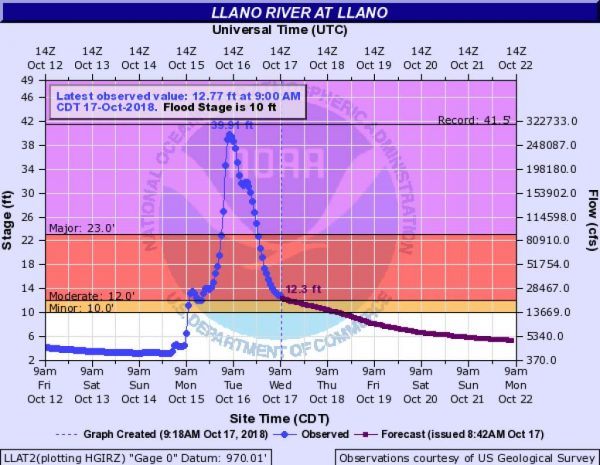Water, water, everywhere…and it continues to rain. With the wettest September in Texas history, now moving well into October, Texas has received historic rain amounts that have led to catastrophic flooding. This past week across Central Texas and the Hill Country, during a 48-hour period, 13-24 inches of rain was reported, according to the National Weather Service (NWS), and we aren’t done yet! The culprit of this torrential downpour began in the Edwards Plateau, upstream from all the rivers and lakes which are now experiencing historic flooding.
Those of us who live, work, and play in the Texas Hill Country know it as more than just a region but as a way of life. The natural beauty of rugged landscapes, rocky hillsides, sweeping vistas, small towns with festivals and live music, spring-fed lakes, and tubing down sparkling rivers is why we call it home. It is iconic to the Lone Star State.
However, that same beauty holds another distinction and tells another story. Most of Central Texas and the Hill Country waterways run through an area known as “Flash Flood Alley.” According to the NWS, it is one of the most flood-prone regions in North America, combining both weather and landscape that produces the unique phenomenon giving rise to rapid flood events we know as flash floods. Flash flooding is a perilous situation out on the ranch where I live.
Flooding and flash flooding are not the same thing. Floods can happen during heavy rains, such as we have witnessed with the recent hurricanes or torrential downpours. Flash floods occur when excessive water fills what are normally dry creeks or river beds (we got a lot of those in the hill country), along with currently flowing creeks and rivers, causing rapid rises of water in a short amount of time.
The NWS defines a flash flood as “one that occurs within six hours or less.” Flash floods can sweep away vehicles, knock over trees and provide dangerous electrical conditions, and according to the NWS, the “most frightening” part of this weather phenomenon is how quickly the water is capable of rising. When a flash flood warning is issued, it means that conditions can change quickly, and an area that looks safe at first glance may not stay that way.
Central Texas waterways are vacation destinations. The brutal flooding these past two weeks has resulted in multiple deaths and widespread destruction across the area affecting state parks and dams along the way. The Lower Colorado River Authority (LCRA) has closed central Texas lakes until further notice. The region remains saturated from heavy rainfall.

On Tuesday, Gov. Greg Abbott issued a state disaster declaration for 18 counties affected by flooding, meaning state resources will be made available to assist local officials. Also, Gov. Abbott ordered increased readiness of the Texas State Operations Center along with state and partner agencies.
“Texas is taking immediate action to respond to the threat of recent severe weather and flooding across the state,” Abbott said. “We have made available all necessary resources to respond as quickly and effectively as possible to this disaster and to assist those in harm’s way. I thank all our first responders and local officials on the ground in these communities for their efforts to assist fellow Texans during this dangerous event.
“When severe weather strikes, Texas will ensure our responders and local officials have what they need to respond and protect those in harm’s way. I also urge all Texans to take their safety into their own hands by closely monitoring changing weather conditions and heeding warnings from local officials,” the governor declared.
According to Governor Abbott’s office, more than 200 low-water crossings across Central Texas were closed earlier this week due to widespread flooding. This has impacted my area as motorists and truck drivers were stranded on roadways. Crews from our city public works, emergency workers and first responders were mobilized to rescue people and assist with food, water, and blankets to those stranded for hours. The flooding was matched with blustery winds and unseasonably cold temperatures.
Texas weather gets intense. Drive informed (drivetexas.org), get educated (texasflood.org), and stay tuned for alerts (warncentraltexas.org). Sign up and register to get emergency warnings for your neighborhood by text, email or phone.
“This is a serious flood,” warned the LCRA. “Please take precautions to protect people and property. Do not attempt to drive through an area that is flooded.”
Turn around, don’t drown.
















